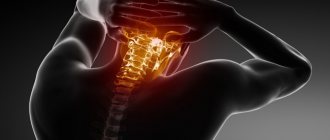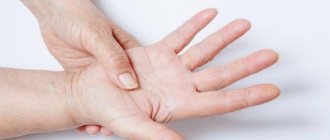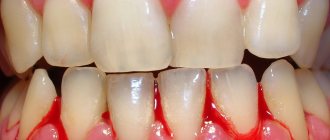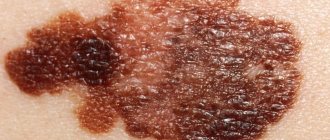What to do when your face goes numb? How dangerous is peresthesia and what pathologies can it lead to? These are the questions asked by many people who have experienced facial numbness. There are a number of reasons that can create this feeling, but not all of them are life-threatening. To avoid serious diagnoses, it is better to immediately seek help from a doctor. Why does numbness occur?
Why does the left side of my face go numb?
The described symptom appears through 2 main mechanisms. The first is associated with a direct violation of the integrity, structure of the nerve, and the conduction of impulses along the fiber. The second possible reason is impaired blood flow.
Numbness on the left for physiological reasons is a transient or transient phenomenon.
Numbness of the face occurs due to the following situations and conditions:
- Poor blood supply to the soft tissues of the head due to an uncomfortable sleeping position;
- Staying in one position for a long time (knitting, sewing, reading, working on the computer);
- Severe stress, anxiety and fear, when when the sympathetic part of the autonomic nervous system is activated, a reflex spasm of muscles and blood vessels occurs, which causes numbness;
- Loud screaming when overexcited;
- Cold exposure;
- Allergy;
- Taking drugs with individual intolerance.
These reasons are removable. After their elimination, the patient no longer feels unpleasant sensations in the left half of the face. But there are more serious situations when the symptom described is a manifestation of a serious neurological disease.
Causes associated with diseases
People who often experience numbness on the left side of the face or on the right side may be carriers of various diseases. These may include:
- Neuralgia, damage to the ternary nerve. With this pathology, the chin and cheeks usually go numb. It can be caused by various inflammatory processes, for example, sinusitis or sinusitis.
- Migraine. This pathology is also associated with diseases of the vascular system, which is why numbness in half of the face is often observed. People who experience very frequent headaches should suspect just such a disorder.
- Depression, stress, neurosis. These conditions should be noted in those patients whose half of the face became numb after strong excitement, and later, without any reason for such excitement, the symptom began to recur regularly.
- Poor blood supply to the face. With this symptom, the right side of the face or only the left side of the person becomes numb. This pathology is one of the most dangerous, as it can provoke the development of a stroke in the near future.
- Osteochondrosis. This disease can be recognized by constant malaise, dizziness, and a crunching sound when turning the head. With cervical osteochondrosis, the entire face often goes numb, less often - a certain side of it.
- Stroke. With this disease, goosebumps are first observed on the face, and only then numbness. If such a disease is suspected, it is recommended to urgently hospitalize the patient.
- Nerve palsy. Most often, this disease is of an infectious nature, for example, it occurs in people suffering from meningitis or the herpes virus. With this pathology, unpleasant symptoms can be observed only in a certain part of the face (for example, a person’s nose goes numb), or spread throughout all the facial muscles.
- Lichen. With this disease, a characteristic rash and itching is also observed, which makes it possible to easily distinguish it from other probable causes of the unpleasant symptom. Numbness in this case often occurs only in part of the face.
https://youtu.be/sLh9XXBpkr0
Important:
also, those people who want to know which disease is numbness in various parts of the face are a sign of, they need to remember that this symptom can also be a sign of the most common ailment. Who can it appear to? Most often, this is observed in people who have recently suffered a serious illness, suffering from a deficiency in the body of vitamin B, as well as various minerals, including potassium.
What are the causes of tingling
Among neurological pathologies, numbness and paresthesia of half of the facial area are primarily caused by neuritis of the trigeminal nerve. It provides all types of nonspecific sensitivity in the facial area: the right nerve - for the right half, the left - for the right half.
In addition to numbness of the face, symptoms of inflammation of the trigeminal (V pair) nerve appear:
- Burning.
- Pain when palpating trigger points in places where the nerve exits: above the orbit, in the chin area, in the projection of the maxillary sinus.
The second reason is the manifestation of osteochondrosis of the cervical spine. When muscles spasm, the vessels and nerve fibers responsible for the sensitivity of the facial area are compressed.
Of the accompanying syndromes, pain in the cervical spine, muscle mass of the neck, head, loss of sensitivity in the arms and fingers on the affected side comes to the fore.
If cerebral circulation is impaired, it is possible that the entire left area of the face becomes numb. But pay attention to focal symptoms. The corner of the mouth may droop, sudden nasal or hoarseness of voice, choking, and asymmetry of the palpebral fissures may occur.
In a small proportion of cases, a stroke occurs as an ischemic attack. Due to the headache, the skin of the face may become numb. With timely help, paresthesia is reversible.
A rarer cause is multiple sclerosis. In addition to numbness in the face, the patient may be bothered by blurred vision. More often this is double vision (diplopia), loss of clarity of visible outlines and contours. Other focal symptoms may come to the fore.
https://youtu.be/zHA-5BiFIT8
How to Diagnose Facial Numbness
If a person’s face becomes numb, then this is the reason for a visit to the doctor. It is necessary to undergo a very thorough examination, the results of which will show what exactly is happening to the body. To establish the true cause, it is necessary to fully evaluate the condition of the trigeminal nerve, take an x-ray of the skull, as well as the nasopharynx and auditory canal.
It will be necessary to conduct a computed tomography scan, as well as an MRI of the posterior skull, more precisely the posterior cranial fossa. An ultrasound examination will show what needs to be corrected and what problem led to the numbness of the face.
Don't be alarmed if additional testing involves testing for syphilis. To establish the true cause of the lesion, additional punctures will be prescribed to determine the increase or decrease in protein content in the body.
To confirm or refute the presence of damage to the nerves of the face, you need to do a study of brainstem reflexes.
If the diagnosis cannot be established, the patient is referred to a consultation with an otolaryngologist to completely examine all parts of the nasal sinuses.
Numbness of the face occurs quite often and in many people. Moreover, this unpleasant symptom can be a sign of a huge number of diseases. Including one of the precursors of stroke and micro-stroke, a manifestation of multiple sclerosis, a complication of inflammation of the trigeminal nerve and many other diseases. Therefore, if you feel numbness in your face, it is better to immediately contact your local physician, who will most likely refer you to a neurologist for consultation.
According to statistics, in no more than every fifth patient with complaints of facial numbness, this symptom indicates some dangerous disease. Most often, the occurrence of this symptom is caused by less global causes. It can also be caused by simple hypothermia or severe nervous stress. Also, numbness of the face can be a sign of osteochondrosis. Facial numbness, accompanied by loss of taste on one side of the tongue and pieces of food getting stuck between the front teeth due to the inability to “push” food into the esophagus, may be a sign of damage to the facial nerve. The same one that is responsible for the action of all facial movements of a person. In this case, numbness can take a chronic form, affecting, among other things, facial expressions, which will change facial features.
In any case, this symptom means that the blood supply has deteriorated in the part of the body that is numb. After all, numbness in most cases is due precisely to the fact that certain muscles “pinch” the nerve, preventing impulses from passing through it from one or another part of the body.
Doctors often advise those who often suffer from numbness in certain parts of the body, including numbness in the face, to check the sensitivity of the numb area. To do this, just try to prick the numb area with a needle. Most often, this simple experiment will demonstrate that nothing bad is happening in the body. In this case, numbness can be easily combated by simply massaging or rubbing the numb area. This test is intended for those who like to “listen” to their body and find manifestations of various diseases. Sensitivity to pain will ideally remove suspicion of paralysis of an area of the body, which is inevitable during a stroke.
“One-time” numbness of the face should not force you to immediately try to find any complex disease. It may be a manifestation of the consequences of a blow to the face. Like arms and legs, the face can become numb after a person has been in an uncomfortable position for a long time, pinching blood vessels and disrupting blood flow. If such numbness does not go away and is not relieved by self-massage, your local therapist will always suggest options for getting rid of numbness.
Facial numbness, which is repeated frequently, or in situations where facial numbness does not go away, becoming a constant manifestation of any disturbances in the body, should alert you and make you think about the need to consult a specialist. For any frequently recurring numbness, you should consult a doctor.
Treatment
Therapy should be etiotropic and pathogenetic. First of all, the causative factors are identified.
Prescription of vascular agents is effective. This is Curantil or Trental. The course of treatment is 10 days. The drug is administered by injection. Then switch to oral administration for at least 2 weeks.
In the presence of severe angina or cardiac arrhythmias, vascular treatment should not be prescribed.
You can expect good results from taking Piracetam. In the case of trigeminal neuritis, a group of NSAIDs (Movalis, Diclofenac) is prescribed. Severe pain requires the appointment of Finlepsin.
Where to go
Numbness on the left side of the face can be a sign of several possible conditions. In some cases, these diseases are severe. If a person experiences a symptom for the first time, it is necessary to consult a doctor. If this occurs along with other signs of a stroke, the person should seek medical help immediately.
Related Article: What Causes Numbness and Tingling?
Before using the advice and recommendations contained on the Medical Insider website, be sure to consult with your doctor.
We invite you to subscribe to our channel in Yandex Zen
If decreased sensitivity is a one-time symptom associated, for example, with an uncomfortable position during sleep, you do not need to see a doctor. But if your arms and legs go numb, the floor of your face is numb after a blow, a concussion, or the discomfort is suspected to be related to cervical osteochondrosis, contact a therapist who will refer you to a specific specialist based on preliminary examinations.
Which doctor should I contact?
The causes of numbness in any area of the head (face, back of the head, right or left side) will be different factors and situations. There is no need to make a diagnosis yourself. To identify the exact causes, you need to contact medical specialists.
The very first doctor to confirm or rule out pathology of the nervous system should be a neurologist. The feeling of numbness is associated with loss of sensitivity, which means that somewhere the passage of electrical impulses along the nerve fiber is disrupted.
A common cause is osteochondrosis of the cervical spine; due to chronic changes in the intervertebral discs, the nerve roots are pinched by neighboring vertebrae. A more serious cause may be a stroke.
Symptoms are sometimes associated with compression of nerves and blood vessels. There is a decrease, sometimes significantly, in the access of nutrients and oxygen to tissues.
The lack of these important elements in a certain area of the muscles and skin creates conditions under which the sensitivity of nerve receptors is disrupted, and a feeling of numbness occurs. It may appear against the background of vascular sclerosis, arterial plaques, or blockage by a detached blood clot.
The obligatory specialist to visit will be a doctor who deals with vascular pathology - a vascular surgeon.
If a person has been suffering from diabetes for a long time, and part of his head has become numb, the issue should be resolved together with his treating endocrinologist. Regularly elevated blood sugar levels lead to nerve damage, and this can provoke the development of paresthesia.
If trauma is the reason that your head is numb, the first doctor you need to see should be an orthopedic traumatologist. It determines what is damaged in the musculoskeletal system, the extent of the damage, and whether rehabilitation is needed. If necessary, the traumatologist can prescribe a consultation or treatment with a surgeon.
Incorrect bite can be one of the reasons for facial numbness. Deviations from the norm in the bite cause additional stress on the jaw muscles and chewing joints. The facial nerve is compressed and paresthesia develops.
To correct the bite and get rid of these unpleasant sensations, treatment by an orthodontist is required.
In rare cases, facial paresthesia occurs after tooth extraction when the nerve has been damaged. If this happens, you need to return to the dental surgeon who removed the tooth so that he can prescribe treatment.
If other specialists have not confirmed the presence of pathology in their area, then perhaps the appearance of a feeling of numbness is associated with an infection that has entered the body and affects the nervous tissue. Here you will need to consult an infectious disease specialist.
With a viral or bacterial infection of the middle ear, sinuses, throat, or respiratory tract, inflammation of the trigeminal nerve may occur. Or with meningitis.
There is another disease - Lyme disease (borreliosis), which occurs when a tick bites. The cause will also be any infection, the complications of which may lead to numbness in the head.
Sometimes paresthesia occurs with autoimmune diseases (systemic lupus erythematosus, multiple sclerosis). The immune system, for unknown reasons, begins to attack tissues, mistaking them for foreign. Here a visit to an immunologist will be necessary.
If a person has been exposed to chemicals that have led to intoxication of the body, and he has a feeling of numbness, emergency medical care is needed to cleanse the blood of toxins and the help of a toxicologist.
It happens that the effect of toxins on the body lasts for a long time (harmful production or alcoholism). They slowly but surely destroy nervous tissue, which leads to paresthesia.
Sometimes the head can go numb as a result of psychological pressures that are associated with stress. A person does not even notice how he takes a certain position, in which the muscles are overstrained, and they compress the nerves.
Here you will need a consultation with a psychiatrist who will prescribe sedatives, or the help of a good psychologist.
Once again, we list the doctors whose help may be needed to determine the causes of numbness of the scalp:
- Neurologist;
- Vascular surgeon;
- Endocrinologist;
- Traumatologist;
- Dentist;
- Infectious disease physician;
- Immunologist;
- Toxicologist;
- Psychiatrist or psychologist.
It happens that paresthesia occurs due to compression of the spinal cord or brain by various tumor processes. This is done by an oncologist.
How to Diagnose Facial Numbness
If a person’s face becomes numb, then this is the reason for a visit to the doctor. It is necessary to undergo a very thorough examination, the results of which will show what exactly is happening to the body. To establish the true cause, it is necessary to fully evaluate the condition of the trigeminal nerve, take an x-ray of the skull, as well as the nasopharynx and auditory canal.
It will be necessary to conduct a computed tomography scan, as well as an MRI of the posterior skull, more precisely the posterior cranial fossa. An ultrasound examination will show what needs to be corrected and what problem led to the numbness of the face.
Don't be alarmed if additional testing involves testing for syphilis. To establish the true cause of the lesion, additional punctures will be prescribed to determine the increase or decrease in protein content in the body.
To confirm or refute the presence of damage to the nerves of the face, you need to do a study of brainstem reflexes.
If the diagnosis cannot be established, the patient is referred to a consultation with an otolaryngologist to completely examine all parts of the nasal sinuses.
What examinations are required
Before making a diagnosis, any doctor prescribes a series of tests and undergoes the necessary examinations.
Of them:
- Blood test (general, biochemical, hormones, infections, toxic substances). The blood is tested to find out whether there is a harmful agent in the blood or not, whether all substances and cells are in sufficient quantity, or whether something is missing. Along with a blood test, your doctor may prescribe a urine test to get a more complete picture of how your body is functioning.
- Doppler ultrasound (ultrasound examination of neck vessels). If the scalp becomes numb, the doctor may suspect problems with the patency of the blood vessels in the neck. Ultrasound examination helps to visually trace the passage of blood flow (speed, direction) and record obstacles in the vessels (atherosclerotic plaques, blood clots, abnormal bends).
- CT scan of the head. Computed tomography collects information about the state of the brain by taking layer-by-layer images. This way you can see injuries, foreign bodies, inflammation of the membranes of the brain, hemorrhages and tumors.
- MRI of the brain. Magnetic resonance imaging creates a three-dimensional image of organs. All details of organs and tissues are visible in 3 dimensions.
- X-ray of the skull. If there is a symptom of numbness, the doctor may prescribe an x-ray as a diagnosis to identify or exclude pathology from the bones, sinuses, and base of the skull. In X-ray images you can see the soft tissues of the brain and obvious changes in them.
- Angiography of the brain. The procedure is performed with intravenous administration of a radiocontrast agent. It improves the visualization of blood vessels. You can determine their shape, volume and rate of filling with blood, and the tortuosity of the vascular pattern of the brain.
Diagnostics
If the head becomes numb (regardless of the side of the numbness), a person should pay attention to other symptoms, which should be reported to the doctor. During the interview, the doctor will also ask about any medications you are taking or any medical conditions you have.
Diagnostic measures aimed at finding out the reason why the patient has a numbness and headache include:
- compilation of personal and family history;
- performing a physical examination;
- the patient performs certain movements to determine nervous activity;
- conducting a blood test;
- performing imaging techniques;
- electromyographic testing.
Prevention if part of the head goes numb
Depending on the nature of numbness, measures are taken to prevent it. Preventive actions will be effective if the paresthesia is temporary.
Its course does not worsen, is not complicated by other symptoms, and it can go away on its own when the compressive or other irritating factor is eliminated.
Recommendations for prevention:
- Control the position of the neck and the tilt of the head when performing any work. The angle of inclination should not be critical.
- Control your posture and shoulder girdle. The head and neck are connected to the rest of the spine through the shoulder region. It is necessary to ensure that all physiological curves of the spine are maintained, but not to overstrain the muscles of the arms and shoulders.
- It is important to monitor your blood sugar levels, especially for people with diabetes.
- Include substances containing B vitamins in your diet. A lack of these vitamins leads to disruption of electrical conductivity along nerve fibers due to damage to their membranes.
- Neck exercises help strengthen muscles and prevent pinching of nerves and blood vessels.
- Under the supervision of a physician, stop taking or reduce the dosage of medications that have paresthesia as one of their side effects.
- Stop drinking alcohol and smoking, their toxic effects have a bad effect on the functioning of the nervous system.
Prevention
To prevent facial numbness from occurring, it is enough to monitor your health and well-being. To begin with, it is worth visiting doctors for preventive examinations at least once a year. If you have this symptom, it is better to immediately visit the clinic so as not to trigger a possible disease.
For general strengthening of the body it is necessary:
- Do not be in drafts;
- Do not overcool;
- Walk in the fresh air at least 2 hours a day;
- Eat a healthy and balanced diet;
- Take vitamin complexes;
- Avoid stress and overwork;
- Watch your posture;
- Sleep on a moderately hard surface with an orthopedic pillow.
It is important not to neglect your condition, because it is better to prevent a disease than to treat it. Numbness of the face is not always dangerous, but knowing the symptoms of provoking diseases will not be superfluous.
Folk remedies
For some paresthesias, folk remedies help.
- Warm compress with salt. The compress is prepared as follows: pour a few tablespoons of salt into a container with hot water so that the solution is highly concentrated; allow to cool to a tolerable temperature; soak a piece of cotton cloth in this solution and apply it to the numb area for 5 minutes. Can be repeated 3 – 4 times. Salt and heat help relax muscles and relieve spasms.
- Taking relaxing or contrast baths. The effect of relaxing baths is the same as that of a compress. You need to lower the part of the body where the feeling of numbness arose into a container of warm water. In contrast baths, conditions for temperature differences are created. Alternately use hot and cold water. The action causes the blood vessels to alternately dilate and contract, providing additional blood flow to the affected area.
- Herbal decoction. They prepare it like this - make a mixture of parsley fruits, goldenrod herb, viburnum bark, nettle leaves, medicinal clover, tricolor violet (2 tablespoons each). Part of this mixture (2 tablespoons) is placed in half a liter of boiled water; boil for several minutes; allow to cool; filter, pour into another container for storage. Drink half a glass of the decoction 2 times a day after meals. For people with herbal allergies, it is better to replace this treatment with an alternative one.
- Acupuncture. A popular method of alternative medicine in the treatment of muscle tension. Acupuncture acts on active points, restoring the movement of energy through the energy channels of the body. Acupuncture successfully treats radiculitis, headaches, vegetative-vascular dystonia, and chronic fatigue syndrome.
- Light massage. The massage is performed without effort or pressure. It can be combined with other types of treatment. With skin and muscle stimulation, blood flow increases and muscles in the affected area relax.
Physiotherapeutic methods
When the forehead is numb or the floor of the face is numb due to improper blood supply, acupuncture or acupuncture will come to the rescue. The session should only be performed by a professional specialist with appropriate education. The method involves installing special needles at certain points. Impact on these points helps strengthen the body, normalize blood circulation, remove tension and relax.
If numbness on the left or right side of the face occurs due to osteochondrosis, then the patient is prescribed electrophoresis procedures, ultrasonic waves, diadynamics, etc.
If several parts of the body are numb due to spasm, then the best physiotherapeutic treatment option is acupressure. This oriental technique is based on massage of certain points of the body. The specialist will help the patient relax and relieve spasms. This option also has a good effect on overall well-being, which is especially important for people with vascular dystonia (VSD).
What to do
You need to understand that the face goes numb in different situations. Therefore, no matter what circumstances need to be taken into account as the main cause of the disease, you cannot do without consulting a doctor. If it is possible to determine that the numbness is affected by a pathological process, you need to choose a therapeutic technique.
If such a condition can be explained by the simplest everyday inconvenience, it is enough to simply eliminate it so that the numbness of the face disappears. You can come for a massage periodically.
You can relax on open bodies of water; morning exercises, which doctors recommend doing regularly, have a good effect, regardless of whether you have had to deal with such problems.
The consumption of beneficial microelements compensates for the lack of B vitamins. This leads to poor nerve conduction. You can regulate your emotions with the help of yoga, acupuncture, and massage treatments. Only a specialist can eliminate degenerative diseases. A comprehensive treatment method that affects the inflammatory focus or ischemic disorders is selected individually.
You need to understand that minor numbness of the face can be eliminated with simple pharmaceutical medications used on an outpatient basis. When paresthesia complicates speech function and motor activity, the patient must be hospitalized immediately. Such symptoms may cause a stroke or other vascular disorders.
To avoid such difficulties, you need to be more careful about your health:
- Stop drinking and smoking.
- Get checked regularly by doctors.
- Rest and exercise more often.
- Get a good night's sleep.
- Don't get into stressful situations.
Numbness of parts of the face and limbs causes unpleasant feelings, and various diseases appear. Therefore, if symptoms occur, you should consult a doctor for advice. Unpleasant signs can be eliminated with timely preventive methods and medications.
Head and face hurt
- First, the left side of the head begins to hurt, and then the right, then the cause may be cluster headaches. Sometimes the pain can radiate into the eye. The causes are abuse of bad habits.
- Migraine attacks are another reason why your head and face hurt. Their distinctive feature is considered to be the occurrence of pain on one side, which is almost never transmitted to the other. Additionally, nausea and vomiting occur. The pain may not stop throughout the day. Young women are at risk.
- When a person is bothered by the right or left side of the face, redness is observed and the face seems to be on fire, severe headaches occur, then this indicates a hypertensive crisis. Additionally, due to increased pressure, pulsation occurs in the temporal part of the head, heart pain, tinnitus, nausea and vomiting, one side of the body goes numb, then it is necessary to urgently call an ambulance.
Ganglionitis of the upper cervical nodes
The pain is paroxysmal.
Each attack can last from several minutes to a day. The pain also radiates to the shoulder girdle, neck, and back of the head. The doctor may additionally identify the following symptoms:
- Sensitivity problems.
- Painful sensations.
- Dental diseases.
- Eye problems. Drooping eyelids, pupils narrow, eyeballs sunken.
The pain can be paroxysmal, but sometimes it is constant. The entire lower jaw and neck hurt, even radiating to the shoulder blade. The front part goes numb.
Brain tumor
This pathology can also act as a cause of numbness. The same applies to aneurysms (pathological dilations of the walls of blood vessels) and subdural hematomas that form under the hard membranes of the brain. As a rule, these pathologies occur in older people due to falls, even minor ones.
Such conditions are characterized by unilateral sensory impairment. Patients experience numbness of the facial skin on the left, for example, paresthesia of one arm or any half of the body. The unpleasant sensations are not acute. They can appear and disappear, growing over time.
First aid
If your head is numb not because of a disease, but only because of an external factor, then getting rid of these sensations will not be difficult. You just need to change your position and calm down.
If the provoking factor is cold, you should dress warmly, and you can also apply an alcohol compress. But just don't overdo it. If the sensitivity of the skin is reduced, careless actions can cause a burn. The first aid is to try to improve blood circulation . This must be done both at the location of the numbness and in an attempt to improve blood circulation throughout the body.
- It is necessary to massage the entire scalp, especially the area with reduced sensitivity.
- Drink hot tea with ginger.
- Take a comfortable, relaxed position.
- Calm down and relieve anxiety with the help of calm music, good thoughts, meditation.
How to treat paresthesia
As soon as the cause of the sensitivity disorder of the facial skin is found, etiotropic treatment is prescribed. Symptomatic therapy consists of taking vitamin preparations containing group B, carrying out physiotherapeutic procedures (electrophoresis, laser and magnetic therapy, etc.).
You can get rid of paresthesia, first of all, by eliminating the provoking factor:
- If the sensitivity of the facial skin is caused by an inflammatory process, for example, periodontal disease, an infection that causes caries, it is treated. Cavities are cleaned, dead teeth are removed, etc.
- If sensitivity is lost due to the development of inflammation in the maxillary sinuses, antibacterial drugs are prescribed for rinsing the nasal cavity. The latter are selected taking into account the sensitivity of pathogens to the main active ingredient.
- If the cause of paresthesia is neuralgia, nonsteroidal anti-inflammatory drugs, reflexology, electrophoresis, and acupuncture are required.
- If paresthesia is a symptom of multiple sclerosis, special hormones and immunosuppressants are prescribed to suppress the immune attack.
- If there is bleeding in the brain (hemorrhagic stroke), urgent delivery of the victim to the hospital department is required, where he is administered antihypoxic drugs. For ischemic stroke, fibrinolytic drugs and anticoagulants are used.
To prevent the occurrence of paresthesia in the future, it is recommended to stop drinking alcohol, lead a healthy lifestyle, and control blood pressure and blood glucose levels. If you manage to detect alarming symptoms against the background of paresthesia (nausea, dizziness, etc.), you should immediately consult a doctor. Home treatment, including folk remedies, can cause additional harm to health.
Source: vsepromozg.ru
Causes of numbness
Numbness can be caused by various triggering factors. These include both external and internal: diseases, pathologies.
External causes causing numbness of the entire face or one part of it:
- Temperature change. Quite a large number of people react negatively to cold and have cold allergies. In such cases, it is recommended to follow the following rules: if possible, avoid overcooling, dress appropriately for the weather, and avoid drafts.
- Sedentary work. Small vessels located on the face narrow, which leads to numbness. This disease quite often appears in office workers, as a result of heavy load on the cervical spine.
- Minor injuries. Injuries can also cause facial numbness.
Numbness can serve as a symptom of a particular disease, and if not given proper attention, it can turn into paralysis. That is why you should consider the reasons why you should seek professional help. This:
- Sclerosis.
- Lichen.
- Blockage of blood vessels and their rupture.
- Stroke. With right-sidedness, the left side of the face goes numb, with left-sidedness, the right side goes numb.
- Trigeminal neuralgia.
- Consequences of viral diseases.
- Irritation of the maxillary and mandibular nerve.
Osteochondrosis and circulatory disorders
If the discomfort is accompanied by headaches, osteochondrosis or circulatory disorders are usually diagnosed.
With osteochondrosis, salts accumulate in the spine. This is manifested by compression of the nerves and vessels of the neck. A crunch in the neck when moving the head can serve as confirmation of osteochondrosis.
Circulatory disorders are usually quite difficult to identify accurately. They can be expressed in blockage of one small capillary and even in an aneurysm. In order to accurately determine the violations, a full medical examination is required, and in this case it will not be possible to do without it. Numbness on the right side of the face may be a clear sign of poor blood supply, although the patient may not necessarily experience numbness throughout the entire face.
Physiotherapy
Physiotherapeutic procedures can be used separately or in combination with the main methods of treatment. Let's list the main ones:
- Acupuncture is an effect on certain points responsible for the functioning of individual organs or the performance of specific functions.
- Acupressure is a type of acupressure that is successfully practiced in modern medicine around the world.
- Ultraphonophoresis , in which ultrasound radiation is used to introduce medications under the skin.
- This physiotherapy helps improve blood circulation, lymphatic drainage, and eliminate the feeling of numbness.
There is no concern when paresthesia appears once and continues for a long time. If seizures recur regularly, it is advisable to get examined by a doctor as soon as possible. You need to be treated on time, so you can get rid of complications and dangerous pathologies.
Neurological factors
When facial numbness persists and the cause is difficult to determine, a neurological examination should be performed.
A sign of loss of sensitivity in the head is accompanied by diseases of the central nervous system:
- Bell's palsy. The viral etiology of the disease with an inflammatory disorder of nerve fibers is characterized by the occurrence of paresthesias that differ in degree of intensity.
- Multiple sclerosis. An autoimmune disease in which the body's cells destroy nerve fibers, resulting in numbness on the left side of the face.
- The trigeminal nerve becomes inflamed due to infections, injuries, and adhesions. This causes pain in the nose, eyesight and hearing.
- When nerves on the left or right side are affected, numbness occurs.
- Shingles. A disorder characterized by characteristic symptoms. In addition to numbness, severe itching and rash occurs on the skin in the affected area.











